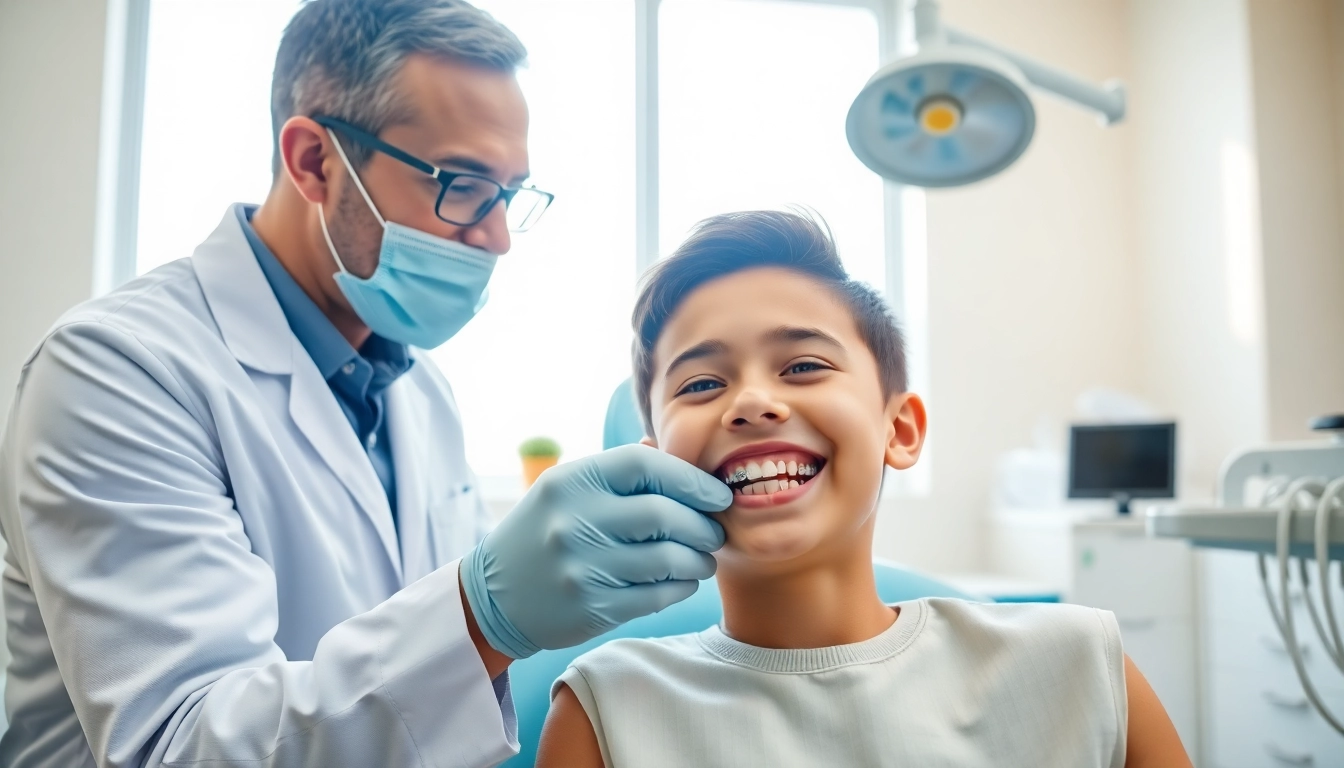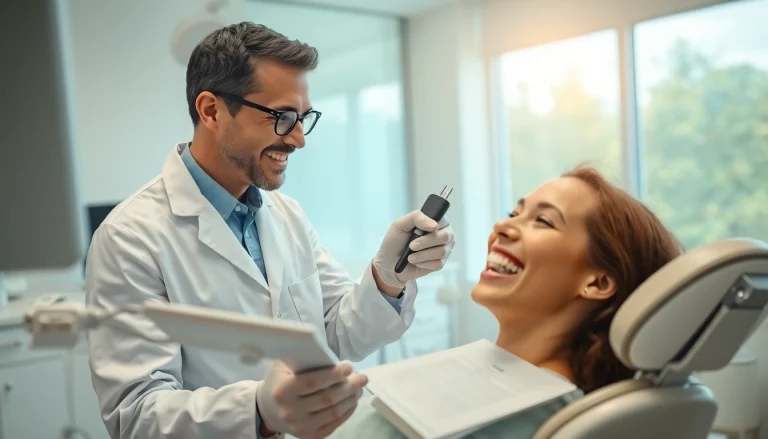Overview of Braces Costs in Myrtle Beach
When considering orthodontic treatment, one of the first aspects that many individuals and parents contemplate is the costs associated with braces. Understanding the braces cost Myrtle Beach is crucial for planning your budget and making informed decisions. The cost of braces can vary significantly due to several factors, including the type of braces, the complexity of the treatment, and other associated costs.
The Average Cost of Braces
The average cost for braces in Myrtle Beach typically ranges between $3,000 and $8,500. This range reflects the diversity of braces types available and the treatment duration required for each patient, whether child or adult. Traditional metal braces, for example, tend to be the least expensive option, generally falling between $3,000 and $7,000, whereas options like Invisalign can reach prices of $4,000 to $8,500 depending on the complexity of the case and treatment needs.
It’s important to note that these figures can fluctuate based on geographic location, the orthodontist’s experience, and the specific clinic you choose. Cities close to Myrtle Beach may present different pricing, making it beneficial to compare quotes when seeking orthodontic care.
Factors Influencing Braces Cost Myrtle Beach
Several key factors impact the overall cost of braces in Myrtle Beach:
- Type of Braces: The choice between traditional metal braces, ceramic braces, lingual braces, or clear aligners like Invisalign will affect pricing. Each type has distinct materials and design, influencing the overall price.
- Duration of Treatment: The length of time you or your child will need to wear braces varies. Some cases may require only a year, while others may extend to two or more years. Longer treatments typically result in higher costs due to increased visits and adjustments.
- Complexity of Dental Issues: Patients with severe misalignments or unique orthodontic challenges may need additional resources, leading to increased costs. Treatments that involve surgical intervention or additional appliances will further elevate expenses.
- Orthodontist’s Expertise: Prominent orthodontists with extensive experience may charge higher fees due to their expertise and reputation. However, this can also correlate with better outcomes and patient satisfaction.
- Location: Prices can vary based on geographic location. Urban areas, such as Myrtle Beach, may exhibit different pricing structures compared to rural regions.
Types of Braces Available
Diving deeper into the types of braces available, understanding the pros and cons of each can help patients make informed decisions:
- Traditional Metal Braces: The most common and cost-effective option. They consist of metal brackets and wires that slowly shift teeth into alignment. While effective, they can be noticeable.
- Ceramic Braces: Similar to metal braces but made from clear materials that blend more closely with natural teeth. They are less noticeable but are typically more expensive and may require additional care due to their fragility.
- Lingual Braces: Positioned behind the teeth, these braces are virtually invisible but can be quite costly and more difficult to clean.
- Clear Aligners: A popular alternative to traditional braces, aligners like Invisalign are designed using 3D imaging. They are removable, making oral hygiene easier, but may require a higher investment. They are often less effective for complex orthodontic cases.
Comparing Braces: Traditional vs. Clear Aligners
Cost Comparison of Different Braces Types
A careful comparison of costs can guide your choice of braces:
- Traditional Metal Braces: $3,000 – $7,000
- Ceramic Braces: $4,000 – $8,000
- Lingual Braces: $8,000 – $10,000
- Clear Aligners: $4,000 – $8,500
While traditional metal braces may represent a lower upfront cost, individuals should consider all factors, including aesthetics and treatment time, before making a decision.
Advantages of Each Type of Braces
Each type of braces offers unique advantages:
- Metal Braces: Effective for all orthodontic issues, often the most affordable option.
- Ceramic Braces: Less noticeable, aesthetically pleasing for those concerned about appearance.
- Lingual Braces: Completely hidden from view, perfect for those who want an invisible solution.
- Clear Aligners: Removable for easy cleaning and eating, and typically more comfortable.
Patient Considerations for Choosing
Choosing the right braces type is a personal decision influenced by factors such as lifestyle, dental health, and aesthetic preferences. Patients should consider:
- Comfort: Some options may cause irritation initially but are worth it for the long-term benefits.
- Effectiveness: More severe dental issues may only be corrected with traditional braces.
- Maintenance: Removable options require diligence in wearing them as prescribed and maintaining cleanliness.
- Cost vs. Benefit: The cheapest option may not always provide the best results.
Payment Options and Financial Assistance
Insurance Coverage for Braces Cost Myrtle Beach
Insurance coverage often plays a significant role in the affordability of braces. Many dental insurance plans cover a portion of orthodontic costs, typically ranging from 50% to 80% after deductibles. However, it’s essential to check the specifics of your plan and determine any limitations or exclusions related to orthodontic treatment. Before proceeding with treatment, coordinate with your orthodontist’s office to verify your coverage and discuss how it applies.
Flexible Payment Plans Explained
Many orthodontic practices offer flexible payment plans to help patients manage out-of-pocket costs effectively. These plans allow patients to spread payments over time, making treatment more affordable. Common practices include:
- Monthly Payment Plans: Patients can pay a set amount each month, often without interest.
- Sliding Scale Fees: Some orthodontists may adjust fees based on financial need, helping to accommodate lower-income families.
- Down Payment Options: A reduced up-front payment can lower monthly costs but may extend the total duration of payments.
Government and Non-profit Resources
For those struggling with the financial aspects of braces, various government and non-profit programs may assist with funding. These resources often cater to low-income families or individuals seeking essential orthodontic treatment. Local health departments and community organizations may also provide specific programs designed to subsidize dental care. Researching these options can yield additional financial relief.
Hidden Costs Associated with Braces
Additional Fees to Consider
Understanding the potential hidden costs of braces can help avoid surprises down the line. Additional fees may include:
- Consultation Fees: Initial evaluations may incur a charge, but many practices offer free consultations.
- Retainers: Once braces are removed, retainers are a necessary expense to maintain teeth alignment.
- Emergency Visits: Unscheduled visits due to broken wires or brackets can lead to additional fees.
- X-rays and Other Diagnostics: Depending on the treatment complexity, various diagnostic procedures may incur separate costs.
Maintenance and Follow-up Costs
Regular check-ups and adjustments are a part of the braces treatment process. These visits, while integral to effective treatment, can add to the overall cost of braces. Patients should budget for:
- Adjustment Appointments: Typically occurring every 4 to 8 weeks, each visit may carry a fee, though many practices include this in the overall treatment cost.
- Maintaining Oral Hygiene Products: Patients may need to purchase specialized toothbrushes, flossing aids, or mouthwash.
Tips for Avoiding Surprise Expenses
Being informed is crucial to avoid unexpected costs associated with braces. Here are some tips:
- Ask Upfront: Always inquire about all potential costs during the consultation process, including any fees for adjustments, retainers, and emergencies.
- Read Contracts Carefully: Before signing an agreement, thoroughly review terms and conditions regarding payments and potential fees.
- Regular Maintenance: Follow your orthodontist’s care instructions to avoid costly emergency visits due to damage.
Long-Term Value of Investing in Braces
Health Benefits of Correcting Dental Issues
Investing in braces offers numerous long-term health benefits. Properly aligned teeth can greatly improve oral health, reducing the risk of tooth decay, gum disease, and other dental problems that commonly arise from misalignment. Additionally, well-aligned teeth facilitate better chewing function, minimizing strain on jaw muscles and joints.
Impacts on Confidence and Social Interactions
Beyond health benefits, achieving a straighter smile has profound effects on an individual’s confidence and social interactions. Many people experience enhanced self-esteem, leading to greater participation in social activities and improved performance in both academic and professional contexts.
Potential Savings on Future Dental Work
By addressing orthodontic issues now, future dental expenses may be significantly reduced. Misalignment can contribute to various complications, including cavities, premature wear, or even tooth loss. Investing in braces not only enhances immediate dental aesthetics but can also yield significant long-term savings by reducing the likelihood of costly dental interventions in the future.






